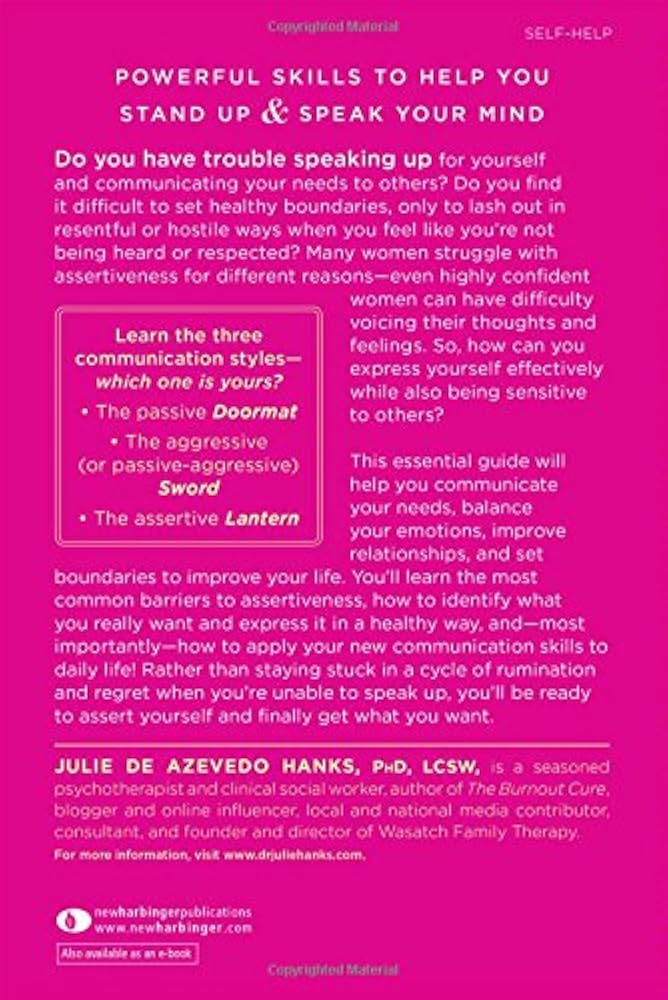How to Improve Communication Skills As a Manager?
To improve communication skills as a manager, focus on active listening, providing clear instructions, and practicing effective feedback. Effective communication skills are crucial for managers to effectively lead and engage their teams.
By enhancing your communication abilities, you can foster a more productive and collaborative work environment. One key aspect of communication as a manager is active listening. This involves giving your full attention, demonstrating empathy, and engaging in two-way conversations. Additionally, providing clear instructions and expectations helps ensure that your team understands their roles and responsibilities.
Finally, actively practicing feedback, both positive and constructive, allows for continuous improvement and growth within the team. By honing these skills, you can become a more effective communicator and ultimately enhance your managerial abilities.
Importance Of Communication Skills For Managers
Effective communication skills are crucial for managers to succeed in their role. Improving these skills can be done through active listening, clear articulation, and fostering an open and transparent work environment. Strong communication enables managers to effectively convey expectations, foster teamwork, and resolve conflicts, ultimately leading to improved performance and productivity.
Enhancing Team Collaboration And Productivity:
Effective communication skills are crucial for managers in enhancing team collaboration and increasing overall productivity within the organization. By establishing open lines of communication, managers can foster an environment that encourages teamwork, idea sharing, and a sense of belonging among team members.
Here are some ways in which communication skills play a vital role in enhancing team collaboration and productivity:
- Promotes clarity: Clear communication helps in conveying expectations, goals, and objectives effectively to the team. It ensures that everyone is on the same page and eliminates any confusion or ambiguity.
- Active listening: Managers who actively listen to their team members create an atmosphere where employees feel valued and understood. This, in turn, helps in building trust and encourages more open and honest communication.
- Encourages feedback: By promoting open communication channels, managers can encourage team members to provide feedback and suggestions. This allows the team to identify areas of improvement and implement necessary changes to enhance productivity.
- Facilitates problem-solving: Effective communication enables managers to engage the team in problem-solving discussions, brainstorming sessions, and decision-making processes. By involving team members, managers can tap into the diverse skills and perspectives, leading to more innovative solutions.
- Builds camaraderie: Communication fosters a sense of togetherness and camaraderie among team members. Regular team meetings, one-on-one discussions, and informal conversations create a positive work environment and promote collaboration.
Building Strong Relationships With Colleagues And Employees:
Building strong relationships with colleagues and employees is essential for managers to create a harmonious work environment, improve employee satisfaction, and boost productivity. Effective communication plays a pivotal role in establishing and nurturing these relationships. Here’s how:
- Promotes trust and transparency: Managers who communicate openly and honestly build trust with their colleagues and employees. Clear and consistent communication fosters transparency and helps in creating a healthy work culture.
- Shows empathy and understanding: Effective communication involves not only conveying information but also understanding and empathizing with others. Managers who demonstrate empathy can develop a deeper connection with their colleagues and employees, fostering stronger working relationships.
- Recognizes achievements: Regular communication allows managers to acknowledge and celebrate the achievements of their colleagues and employees. Recognizing their efforts creates a positive and motivating work atmosphere, leading to increased engagement and productivity.
- Provides support and guidance: Through effective communication, managers can provide the necessary support, guidance, and feedback to their team members. This facilitates their growth and development, improving overall performance.
- Resolves issues promptly: Open communication channels enable managers to address any conflicts or concerns promptly. By taking the time to listen and understand the issues, managers can work towards finding solutions and minimizing any negative impact on relationships.
By focusing on enhancing team collaboration, building strong relationships, and resolving conflicts, managers can improve their communication skills and create a conducive work environment that fosters productivity, teamwork, and employee satisfaction.
Assessing Your Current Communication Skills
Improve your communication skills as a manager by assessing your current abilities. Enhance your effectiveness through self-reflection and practice.
Improving your communication skills as a manager is crucial for building strong relationships with your team members and fostering a positive work environment. Before embarking on this journey of improving your communication skills, it’s important to assess your current abilities.
This will allow you to identify areas that need improvement, seek valuable feedback, and recognize common pitfalls that may hinder effective communication. Here are some key steps to consider:
Identifying Areas For Improvement:
- Start by evaluating your verbal and written communication skills. Assess how clearly and concisely you articulate ideas, instructions, and feedback.
- Reflect on your ability to actively listen to others. Consider whether you truly listen and understand, or if you tend to interrupt or jump to conclusions.
- Evaluate your non-verbal communication skills, such as body language and facial expressions. Determine whether they enhance or detract from your intended message.
- Take note of how well you adapt your communication style to different individuals and situations. Consider if you tend to be too assertive or too passive in your approach.
- Reflect on your ability to provide constructive criticism and feedback. Assess whether you are able to deliver feedback effectively without causing defensiveness or resentment.
Seeking Feedback From Colleagues And Employees:
- Regularly ask for feedback from your colleagues and team members. Create an open and safe environment where they feel comfortable providing honest assessments of your communication skills.
- Consider conducting one-on-one meetings or anonymous surveys to gather more comprehensive feedback.
- Take the feedback you receive seriously and approach it as an opportunity for growth. Be open-minded and willing to make necessary changes based on the feedback provided.
- Engage in active listening when receiving feedback. Avoid becoming defensive or dismissive, and instead, focus on understanding the perspectives of others.
Recognizing Common Communication Pitfalls:
- Be aware of common communication barriers such as misinterpretation, misunderstanding, and assumption. Strive to be clear and explicit in your messages to prevent these pitfalls.
- Pay attention to your tone of voice and word choice, as they can heavily impact how your message is received. Be mindful of using assertive instead of aggressive language.
- Avoid vague or ambiguous statements that can cause confusion. Instead, strive for clarity and precision in your communication.
- Be aware of non-verbal cues and body language that may contradict your words. Ensure that your non-verbal communication aligns with your intended message.
- Be cautious of overusing jargon or technical terms that may not be easily understood by all individuals. Strive for clear and inclusive communication.
By assessing your current communication skills, you lay the foundation for growth and improvement. Identifying areas for improvement, seeking feedback, and recognizing common pitfalls can help you hone your skills as a manager and create stronger connections with your team members.
Active Listening Techniques
Improve your communication skills as a manager by implementing active listening techniques. Enhance your ability to understand, engage, and respond effectively to your team members, fostering a productive and collaborative work environment.
Effective communication is key to being a successful manager. One crucial aspect of communication is active listening, which involves fully understanding and engaging with the speaker. Active listening techniques can greatly improve communication skills, allowing managers to build stronger relationships with their team members and enhance productivity.
In this section, we will explore two important techniques for active listening: maintaining eye contact and attentive body language, and asking clarifying questions and paraphrasing.
Maintaining Eye Contact And Attentive Body Language:
- Make eye contact: When someone is speaking to you, maintain eye contact to show that you are fully focused and engaged in the conversation.
- Lean forward: Leaning slightly forward indicates interest and attentiveness, encouraging the speaker to open up and share more.
- Nod and smile: Non-verbal cues such as nodding and smiling can demonstrate understanding and encouragement, allowing the speaker to feel valued and heard.
Asking Clarifying Questions And Paraphrasing:
- Seek clarification: If you’re unsure about something the speaker has said, ask open-ended questions to dig deeper and gain a clearer understanding.
- Paraphrase their words: Summarize the speaker’s main points in your own words to ensure accurate comprehension and show that you are actively listening.
- Reflect back: Using phrases like “So, what I’m hearing is…” or “If I understand correctly…” can validate the speaker’s message and promote effective communication.
By implementing these active listening techniques, managers can create an environment where team members feel valued and understood. This fosters open communication, trust, and collaboration, ultimately leading to improved performance and productivity within the team.
Clear And Concise Speaking
Learn how to improve your communication skills as a manager by practicing clear and concise speaking. Use simple and direct sentences to effectively convey your message and engage your team.
Effective communication is a vital skill for managers to possess, as it enables them to relay information clearly and concisely to their team members. When managers are able to speak in a manner that is easy to understand and engaging, it not only improves team dynamics but also ensures that everyone is on the same page.
Here are a few tips for managers to enhance their clear and concise speaking skills:
Organizing Thoughts Before Speaking:
- Take a moment to gather your thoughts before speaking to ensure your message is clear.
- Jot down key points or create an outline to structure your thoughts effectively.
- Consider the order in which you present your ideas to ensure a logical flow.
Using Simple And Understandable Language:
- Avoid the use of jargon or technical terms that may confuse your audience.
- Break down complex concepts into simple, relatable examples.
- Use everyday language that your team members can easily grasp.
Being Mindful Of Tone And Non-Verbal Cues:
- Pay attention to your tone of voice and ensure it aligns with your intended message.
- Use appropriate gestures and body language to reinforce your communication.
- Be aware of non-verbal cues from your audience to gauge their understanding and engagement.
By implementing these strategies, managers can greatly enhance their communication skills, ensuring that their message is clear, concise, and effectively understood by their team members.
Body Language Awareness
Body Language Awareness is crucial for managers looking to improve their communication skills. By paying attention to nonverbal cues and gestures, managers can enhance their understanding and effectiveness in interactions with employees, fostering stronger relationships and clearer communication.
Understanding The Impact Of Posture, Gestures, And Facial Expressions:
- Posture: Maintaining an upright and open posture can convey confidence and professionalism. Avoid slouching or crossing your arms, as it can signal disinterest or defensiveness.
- Gestures: Using appropriate hand gestures can enhance your verbal communication and help emphasize key points. However, excessive or distracting gestures can create confusion or be perceived as unprofessional.
- Facial expressions: Your facial expressions have a significant impact on how others perceive your messages. Being aware of your facial expressions can help you convey warmth, friendliness, and empathy. Avoid frowning or displaying negative expressions, as they can undermine effective communication.
Using Appropriate Body Language To Convey Confidence And Openness:
- Eye contact: Maintaining appropriate eye contact demonstrates attentiveness and interest in the conversation. However, be mindful of cultural differences in eye contact norms.
- Smiling: A genuine smile can create a positive and welcoming environment, fostering better communication. Smiling can also help diffuse tension and establish rapport with colleagues and team members.
- Open postures: Fostering an open and relaxed posture, such as keeping your arms uncrossed, signals approachability and encourages others to engage in open dialogue.
- Nodding and active listening: Demonstrating active listening through nodding and other nonverbal cues shows that you are engaged and value what others have to say.
Adapting Body Language To Different Cultural Contexts:
- Cultural awareness: Different cultures have varying norms and expectations regarding body language. Familiarize yourself with cultural differences to avoid misunderstandings or causing offense.
- Personal space: Respect personal space boundaries that may differ across cultures. Being mindful of personal space helps ensure others feel comfortable and respected during conversations.
- Handshakes: In some cultures, handshakes are a common form of greeting, while in others, alternative greetings like bowing or exchanging business cards may be preferred. Be open and adaptable to different cultural practices in professional settings.
Remember, effective communication extends beyond words. Mastering body language awareness and adapting it to different situations can greatly improve your communication skills as a manager.
Effective Use Of Visual Aids
To enhance communication skills as a manager, incorporating visual aids effectively is essential. Visual aids facilitate clear understanding and help convey complex information easily, resulting in improved communication and collaboration among team members.
Utilizing Visual Aids To Enhance Presentations And Meetings
Visual aids play a crucial role in enhancing communication skills as a manager. By incorporating visual elements into presentations and meetings, managers can effectively convey their message, engage their audience, and ensure better understanding. Here are some key points to consider when utilizing visual aids:
- Use visuals to emphasize important information: Whether it’s graphs, charts, or diagrams, visual aids can help highlight key data or concepts, making them more memorable for the audience.
- Incorporate multimedia elements: Videos, images, and other multimedia tools can bring your presentations to life, capturing the attention of your audience and facilitating better communication.
- Create clear and concise visuals: Visual aids should be easy to understand at a quick glance. Avoid cluttered visuals and focus on simplicity, ensuring that each element serves a clear purpose.
- Use color strategically: Colors can be a powerful tool in visual aids, helping to convey emotions or differentiate between different elements. However, ensure that your color choices are appropriate and do not distract from the main message.
- Consider accessibility: When using visual aids, it’s important to consider the needs of all participants. Ensure that your visuals are accessible to individuals with visual impairments or colorblindness by providing alternative text or using accessible design principles.
Choosing Appropriate Visual Aids For Different Situations
Not all visual aids are suitable for every situation. When selecting visual aids, managers should consider the context, the audience, and the purpose of the communication. Here are some key points to keep in mind:
- Understand the objective: Clearly define the purpose of your communication and choose visual aids that align with your intended outcome. For example, if you’re trying to explain a complex process, flowcharts or diagrams may be more effective than simple text.
- Know your audience: Consider the preferences and needs of your audience. Some people may respond better to visual representations, while others may prefer written or verbal communication. Tailor your visual aids to cater to different learning styles and preferences.
- Use appropriate technology: With advancements in technology, there are various tools and software available to create visually appealing presentations. Choose the right technology that suits your needs and is compatible with the presentation setting.
- Balance visuals with verbal communication: Visual aids should complement your verbal communication, not replace it entirely. Use visuals as a supporting tool to enhance understanding and engagement, while still maintaining a strong verbal presence.
Ensuring Visual Aids Are Clear, Concise, And Impactful
The effectiveness of visual aids relies heavily on their clarity, conciseness, and impact. To ensure your visual aids are effective, consider the following:
- Keep it simple: Avoid cluttering your visual aids with excessive information. Stick to the most relevant and impactful content, and remove any unnecessary elements that can distract or confuse the audience.
- Use legible fonts and sizes: Choose fonts that are easy to read and ensure that the text is large enough for everyone to see from a distance. This will prevent any visual strain or difficulties in understanding the information.
- Use appropriate visuals for the message: Match the type of visual aid to the content you’re presenting. For example, use a bar graph to compare different data sets or use a flowchart to demonstrate a process.
- Highlight key points: Utilize visuals to emphasize the most important information or takeaways. This will help the audience focus on the key messages and retain the information more effectively.
- Practice and test beforehand: Before presenting, review your visual aids to ensure they are error-free and visually appealing. Practice your presentation to familiarize yourself with the visual aids and ensure a smooth delivery.
By utilizing visual aids effectively, managers can enhance communication skills, facilitate better understanding, and engage their audience more effectively in presentations and meetings. Visual aids provide an opportunity to make information more memorable and impactful, resulting in improved communication and collaboration within the organization.
So, don’t underestimate the power of visual aids in strengthening your communication skills as a manager.
Clear And Professional Email Communication
Improve your communication skills as a manager by mastering clear and professional email communication. Enhance your effectiveness in conveying your message and ensure clarity in your emails for better understanding and collaboration with your team.
Effective communication skills are crucial for managers in any organization. One significant aspect of communication is email correspondence. Emails are a common means of conveying information, collaborating with colleagues, and fostering professional relationships. Therefore, it is essential for managers to master the art of clear and professional email communication.
In this section, we will explore three key elements to enhance your email writing skills: structuring emails effectively, using proper grammar and punctuation, and tailoring messages to the recipient’s needs.
Structuring Emails Effectively:
When composing an email, it is essential to structure it in a way that facilitates efficient and effective communication. Here are some tips to help you structure your emails effectively:
- Start with a clear and concise subject line that accurately reflects the content of your email.
- Begin your email with a courteous greeting, such as “Dear [Recipient’s Name],” or “Hello [Recipient’s Name],”.
- Use paragraphs to separate different ideas or topics within your email.
- Provide a concise opening that clearly states the purpose or intent of your email.
- Use bullet points or numbered lists to break down complex information or action items.
- End your email with a polite closing, such as “Best regards,” or “Thank you for your attention,” followed by your name and contact information.
Using Proper Grammar And Punctuation:
Using correct grammar and punctuation is crucial for maintaining a professional tone in your emails. Here are some guidelines to help you with this:
- Proofread your emails before sending them to ensure they are free from grammatical errors.
- Use appropriate capitalization and punctuation.
- Avoid excessive use of exclamation marks or emoticons, as they can come across as unprofessional.
- Keep your sentences and paragraphs concise and to the point.
- Avoid using slang or abbreviations that may be unfamiliar to the recipient.
- Be mindful of using the appropriate tone and language for different recipients (e.g., formal vs. Informal).
Tailoring Messages To The Recipient’S Needs:
To effectively communicate through emails, it is important to tailor your messages to the specific needs of your recipients. Here are some tips to help you do this:
- Familiarize yourself with the recipient’s background, role, and communication preferences.
- Use language and terminology that the recipient will understand and relate to.
- Adapt your tone and level of formality based on the recipient’s relationship with you and their position within the organization.
- Consider providing additional context or explanations when communicating with individuals unfamiliar with certain topics.
- Consider the recipient’s time constraints and ensure your messages are concise and relevant.
By following these guidelines and practicing clear and professional email communication, you can greatly enhance your effectiveness as a manager. Effective email communication can lead to improved collaboration, increased productivity, and stronger relationships with your colleagues and stakeholders.
Writing Effective Reports And Documentation
Learn how to enhance your communication skills as a manager through effective report writing and documentation. Discover practical tips and strategies to improve your writing style, convey your message clearly, and engage your audience. Elevate your managerial communication to achieve better results and maintain strong working relationships.
Organizing Information In A Logical Manner:
- Begin with a clear and concise introduction that sets the context for the report or documentation. Clearly state the purpose or objective of the communication to provide a roadmap for the reader.
- Use headers and subheaders to organize the content into sections, making it easier for the reader to navigate through the document.
- Break down complex concepts or ideas into smaller, digestible chunks. Present information in a logical sequence, ensuring that each section flows smoothly into the next.
- Utilize bullet points and numbered lists to highlight key points or important information within a section.
- Use headings and subheadings to separate different sections of the report or document, enabling the reader to skim through and find specific information quickly.
Using Clear And Concise Language:
- Keep sentences short and to the point, using simple language that is easy to understand. Avoid unnecessary jargon or technical terms that may confuse the reader.
- Use active voice to convey information more directly and clearly. This makes the writing more engaging and easier to comprehend.
- Eliminate any redundant or unnecessary words, ensuring that each sentence contributes to the overall message.
- Be mindful of the tone and level of formality, adapting the language based on the intended audience. Avoid using overly colloquial or formal language that may alienate or confuse the reader.
Proofreading And Editing For Accuracy And Clarity:
- After writing the initial draft, take the time to thoroughly proofread the document. Check for any spelling or grammatical errors, ensuring that the writing is polished and professional.
- Read the document aloud to identify any awkward phrasing or unclear sentences. Edit them for improved clarity and flow.
- Double-check all the facts, figures, and references included in the report or document. Ensure they are accurate and up-to-date, providing a reliable source of information for the reader.
- Consider seeking feedback from colleagues or peers to gain an outside perspective on the document. Incorporate their suggestions and make revisions as needed.
By organizing information in a logical manner, using clear and concise language, and proofreading and editing for accuracy and clarity, managers can enhance their communication skills and effectively convey their message through reports and documentation. This ensures that the intended audience can easily understand the information presented, leading to improved decision-making and overall effectiveness in managerial roles.
Managing Difficult Conversations
Improve your communication skills as a manager by learning effective techniques for managing difficult conversations. Gain the knowledge and tools needed to navigate challenging discussions and strengthen collaboration within your team.
As a manager, one of the most crucial skills you can develop is the ability to effectively navigate and manage difficult conversations. These conversations may involve disagreements, conflicts, or delivering tough feedback. By mastering the art of managing difficult conversations, you can promote open communication, maintain positive relationships, and ultimately drive success within your team.
Here are some key strategies to help you improve your communication skills as a manager in these challenging situations:
Preparing For Difficult Conversations:
- Define the objective: Clearly establish the purpose and desired outcome of the conversation. Determine what you want to achieve and communicate it effectively.
- Gather information: Prior to the conversation, gather all relevant facts and details. This will help you present your points accurately and avoid misunderstandings.
- Choose the right time and place: Select a suitable environment that is private, free from distractions, and conducive to open dialogue. Additionally, consider the timing to ensure everyone is in the right mindset for discussion.
- Plan your approach: Outline the key points you want to address and think through potential responses or reactions. Anticipate any challenges or emotional reactions that may arise, and plan how you will handle them.
Active Listening During Disagreements Or Conflicts:
- Stay present and engaged: Give your full attention to the person speaking, maintaining eye contact and actively listening to their perspective.
- Validate their feelings: Understand that emotions can run high during difficult conversations. Show empathy and acknowledge their emotions, even if you don’t necessarily agree with their point of view.
- Paraphrase and clarify: Reflect back on what the other person has said to demonstrate your understanding. Ask open-ended questions to clarify any uncertainties and ensure you have a clear comprehension of their perspective.
- Avoid interrupting or becoming defensive: Practice patience and restraint, allowing the other person to express themselves fully before responding. Responding with defensiveness can escalate tensions and hinder effective communication.
Finding Mutually Beneficial Solutions:
- Focus on interests, not positions: Look beyond superficial differences in opinions and uncover the underlying interests and needs of all parties involved. This broader perspective can pave the way for creative and mutually beneficial solutions.
- Brainstorm together: Encourage a collaborative approach by inviting input and ideas from all parties. Foster an environment where everyone feels comfortable contributing their thoughts and suggestions.
- Generate options: Explore different possibilities and alternatives that could address the concerns and goals of all involved. Evaluate these options together, considering the potential outcomes and consequences.
- Reach a shared agreement: Work towards a consensus by facilitating a discussion that weighs the pros and cons of different options. Aim for a solution that everyone can support and commit to, ensuring accountability for follow-through.
By following these strategies and honing your communication skills, you can confidently navigate difficult conversations as a manager. Remember, effective communication is not about avoiding conflict but rather about skillfully managing it to achieve positive outcomes for all parties involved.
Embrace the challenge, and leverage these techniques to foster a culture of open communication within your team.

Credit: stratus.hr
Dealing With Language And Cultural Barriers
Improve communication skills as a manager by effectively dealing with language and cultural barriers. Enhance understanding and create an inclusive work environment through clear and concise communication techniques. Build strong relationships and promote collaboration among diverse teams for increased productivity and success.
Adapting Communication Styles To Diverse Audiences:
- Understand the importance of adapting your communication style to different audiences, including those with language and cultural barriers.
- Tailor your communication approach to meet the needs of diverse individuals, ensuring messages are effectively understood.
- Use techniques such as simplifying complex concepts, providing visual aids, and using clear and concise language.
- Consider the preferred communication methods of your audience, whether it’s written, verbal, or non-verbal.
Recognizing And Respecting Cultural Differences:
- Be aware of cultural nuances and differences in communication styles, gestures, and customs.
- Respect and value cultural diversity by avoiding assumptions and stereotypes.
- Take the time to educate yourself on different cultural practices to avoid misunderstandings and promote inclusivity in your communication.
- Adapt your communication approach to align with cultural norms, remaining sensitive and open-minded.
Employing Appropriate Language Translation Tools When Necessary:
- Utilize language translation tools to bridge language barriers and facilitate effective communication.
- Use reliable and accurate translation tools to ensure accurate understanding and convey messages clearly.
- Be cautious in relying solely on automated translations and consider involving human translators for important communications.
- Stay updated with the latest translation tools available to make communication smoother and more efficient.
Setting Communication Goals
As a manager, you can enhance your communication skills by setting specific goals. This will help you improve your ability to effectively convey information and build stronger relationships with your team.
Improving communication skills as a manager is crucial for effective leadership and team collaboration. To achieve this, it is important to set clear communication goals. By identifying specific areas for improvement, setting measurable goals to track progress, and seeking continuous learning opportunities, you can enhance your communication skills as a manager.
Let’s dive deeper into each of these areas:
Identifying Specific Areas For Improvement
To start improving your communication skills, it is essential to identify the specific areas that need improvement. Consider the following points:
- Active Listening: Focus on improving your ability to listen attentively and understand others’ perspectives.
- Clarity and Conciseness: Work on conveying your thoughts and instructions clearly and concisely, avoiding ambiguity.
- Non-Verbal Communication: Pay attention to your body language, facial expressions, and gestures, ensuring they align with the message you are conveying.
- Feedback and Constructive Criticism: Practice giving and receiving feedback in a constructive and respectful manner.
- Emotional Intelligence: Enhance your ability to understand and manage your emotions, as well as empathize with others.
Setting Measurable Goals To Track Progress
Once you have identified the areas for improvement, it is time to set measurable goals that will allow you to track your progress. Consider the following examples:
- Increase active listening skills by participating in at least two active listening workshops within the next three months.
- Improve clarity and conciseness by practicing delivering concise instructions during team meetings, aiming for at least 90% comprehension by team members within six months.
- Enhance non-verbal communication by videotaping yourself during presentations and analyzing your body language, aiming to convey confidence and clarity in 90% of all presentations within a year.
- Develop feedback and constructive criticism skills by setting a goal to engage in at least one feedback conversation per month, providing actionable suggestions for improvement.
Seeking Continuous Learning Opportunities
Improving communication skills is an ongoing journey that requires continuous learning. Consider the following strategies to enhance your skills:
- Enroll in communication skills training programs or workshops to learn new techniques and strategies.
- Read books and articles on effective communication to gain insights and learn from experts in the field.
- Seek feedback from your team, colleagues, and superiors, and use it to refine and improve your communication style.
- Regularly reflect on your communication experiences and identify areas for further growth.
- Engage in networking opportunities to learn from other managers and leaders who have successfully improved their communication skills.
By identifying specific areas for improvement, setting measurable goals, and seeking continuous learning opportunities, you can make significant strides in improving your communication skills as a manager. Your enhanced abilities will not only strengthen your relationships with your team but also contribute to overall success within your organization.
So, start setting those communication goals today and get ready to unleash your full managerial potential.
Seeking Feedback And Self-Reflection
To improve communication skills as a manager, seeking feedback and engaging in self-reflection are essential. By actively seeking input and reflecting on your own performance, you can identify areas for growth and make necessary improvements to your managerial communication style.
This proactive approach fosters effective communication and enhances your leadership abilities.
Communication skills are crucial for any manager to succeed in their role. One way to continuously improve these skills is by seeking feedback from colleagues and employees. By asking for input, you show your commitment to their growth and the overall success of the team.
Here are a few ways to solicit feedback:
- Schedule one-on-one meetings: Set aside dedicated time to have open and honest conversations with your colleagues and employees. This allows them to feel comfortable providing their opinions and suggestions.
- Use anonymous surveys: Sometimes, individuals may hesitate to share their feedback directly. By utilizing anonymous surveys, you create a safe space for them to express their thoughts without fear of judgment or repercussions.
- Foster a culture of open communication: Encourage team members to share their ideas and concerns freely. Create an environment where everyone feels valued and heard. This openness will help you gather valuable feedback that you can use to enhance your communication skills.
Reflecting on your communication successes and failures is equally important. Here’s how you can do it:
- Assess your communication style: Take time to evaluate how you communicate with others. Are you being clear and concise? Are you actively listening to what others have to say? Identifying areas for improvement is the first step towards growth.
- Solicit feedback on specific interactions: If there was a particular communication incident that you feel didn’t go well, seek feedback from those involved. Ask for their perspective and learn from the experience. This way, you can gain insights into how you can improve your communication in similar situations.
- Keep a journal: Consider keeping a record of communication successes and failures. Documenting specific instances can help you identify patterns and trends, allowing you to make necessary adjustments in your approach.
Implementing changes based on feedback received is essential to becoming a better communicator. Here’s how to put your feedback into action:
- Create an action plan: Review the feedback you’ve received and identify areas that require improvement. Develop a plan outlining specific steps you can take to enhance your communication skills.
- Seek support and resources: Don’t hesitate to reach out to mentors, coaches, or training programs that can help you develop the skills you need. Learning from others and utilizing available resources can accelerate your improvement.
- Practice, practice, practice: Improving communication skills is an ongoing process. Make a conscious effort to apply the feedback you’ve received in your day-to-day interactions. With consistent practice, you’ll see gradual improvements over time.
Remember that effective communication is a journey, and it requires continuous self-reflection and growth. By actively seeking feedback, reflecting on your successes and failures, and implementing changes accordingly, you’ll become a more proficient and influential communicator as a manager.
Embracing Lifelong Learning And Growth
Discover effective strategies to improve your communication skills as a manager. Embrace lifelong learning and growth to enhance your ability to convey ideas clearly and build strong professional relationships.
Communication skills are essential for managers to effectively lead their teams and achieve organizational goals. While some may believe that mastering communication is a one-time accomplishment, the reality is that it’s an ongoing process. As a manager, recognizing this fact and embracing lifelong learning and growth can significantly enhance your communication abilities.
In this section, we will explore the importance of continuously honing your skills, committing to practice and improvement, and the positive impact of effective communication as a manager.
Recognizing That Communication Skills Are Never Fully Mastered:
- Acknowledge that communication is a dynamic skill that requires constant development.
- Understand that there is always room for improvement, even if you already possess strong communication skills.
- Embrace the mindset that learning and growth are essential components of becoming a better communicator.
- Recognize that the changing business landscape and evolving technologies necessitate ongoing skill development.
Committing To Ongoing Practice And Improvement:
- Engage in regular self-assessment to identify areas for improvement in your communication style.
- Seek feedback from colleagues, employees, and mentors to gain different perspectives and insights.
- Actively participate in training programs, workshops, or courses that focus on communication skills development.
- Dedicate time each day or week to practice effective communication techniques and strategies.
Embracing The Positive Impact Of Effective Communication As A Manager:
- Understand that effective communication improves productivity and fosters a positive work environment.
- Recognize that clear and concise communication reduces misunderstandings and conflicts.
- Appreciate the role of communication in building trust, credibility, and strong relationships with employees.
- Realize that effective communication enables efficient decision-making and problem-solving.
Continuously improving your communication skills as a manager is a lifelong journey. By recognizing that communication skills are never fully mastered, committing to ongoing practice and improvement, and embracing the positive impact of effective communication, you can enhance your managerial abilities and achieve success in leading your team.
So, embrace the opportunity to grow as a communicator and watch as your managerial effectiveness soars.
Frequently Asked Questions For How To Improve Communication Skills As A Manager
Why Do Managers Struggle With Communication?
Managers struggle with communication due to lack of clarity, poor listening, and inadequate feedback.
What Do Managers Do Through Good Communication?
Managers ensure effective communication to accomplish goals and maintain strong relationships within the team.
What Are The Essential Communication Skills For Managers?
Essential communication skills for managers include active listening, effective delegation, clear and concise messaging, and strong interpersonal abilities.
How Can Managers Improve Their Communication Skills?
Managers can improve their communication skills by actively listening, providing clear instructions, and giving constructive feedback. They should also practice empathy, use effective body language, and be open to receiving input from their team members.
Conclusion
Improving communication skills is essential for managers seeking success in today’s dynamic work environment. By actively listening, adapting communication styles, and providing clear directions, managers can foster a more productive and harmonious workplace. Effective communication allows managers to build strong relationships with their teams, resulting in increased employee engagement and morale.
Furthermore, it enables managers to convey expectations and goals effectively, leading to improved efficiency and productivity. By leveraging various communication channels and being mindful of nonverbal cues, managers can create an inclusive environment that encourages open dialogue and collaboration. It is also crucial for managers to continuously develop their communication skills through training programs and self-reflection.
Ultimately, honing these skills will not only benefit managers but also contribute to the overall success of the organization.





